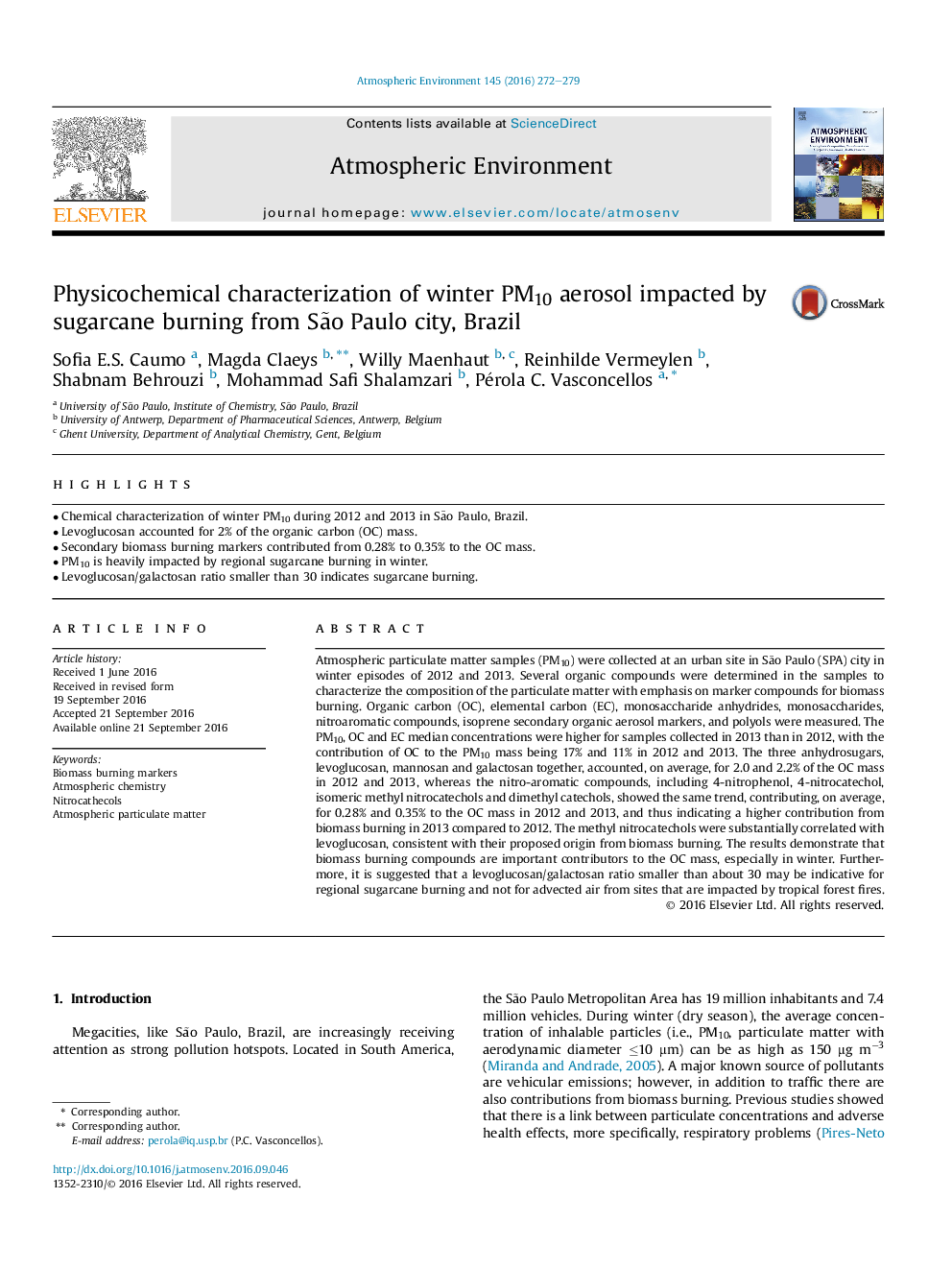| کد مقاله | کد نشریه | سال انتشار | مقاله انگلیسی | نسخه تمام متن |
|---|---|---|---|---|
| 6335852 | 1620329 | 2016 | 8 صفحه PDF | دانلود رایگان |

- Chemical characterization of winter PM10 during 2012 and 2013 in São Paulo, Brazil.
- Levoglucosan accounted for 2% of the organic carbon (OC) mass.
- Secondary biomass burning markers contributed from 0.28% to 0.35% to the OC mass.
- PM10 is heavily impacted by regional sugarcane burning in winter.
- Levoglucosan/galactosan ratio smaller than 30 indicates sugarcane burning.
Atmospheric particulate matter samples (PM10) were collected at an urban site in São Paulo (SPA) city in winter episodes of 2012 and 2013. Several organic compounds were determined in the samples to characterize the composition of the particulate matter with emphasis on marker compounds for biomass burning. Organic carbon (OC), elemental carbon (EC), monosaccharide anhydrides, monosaccharides, nitroaromatic compounds, isoprene secondary organic aerosol markers, and polyols were measured. The PM10, OC and EC median concentrations were higher for samples collected in 2013 than in 2012, with the contribution of OC to the PM10 mass being 17% and 11% in 2012 and 2013. The three anhydrosugars, levoglucosan, mannosan and galactosan together, accounted, on average, for 2.0 and 2.2% of the OC mass in 2012 and 2013, whereas the nitro-aromatic compounds, including 4-nitrophenol, 4-nitrocatechol, isomeric methyl nitrocatechols and dimethyl catechols, showed the same trend, contributing, on average, for 0.28% and 0.35% to the OC mass in 2012 and 2013, and thus indicating a higher contribution from biomass burning in 2013 compared to 2012. The methyl nitrocatechols were substantially correlated with levoglucosan, consistent with their proposed origin from biomass burning. The results demonstrate that biomass burning compounds are important contributors to the OC mass, especially in winter. Furthermore, it is suggested that a levoglucosan/galactosan ratio smaller than about 30 may be indicative for regional sugarcane burning and not for advected air from sites that are impacted by tropical forest fires.
Journal: Atmospheric Environment - Volume 145, November 2016, Pages 272-279